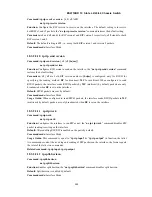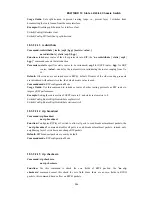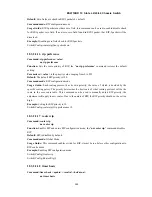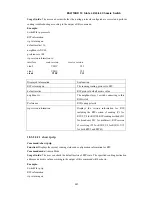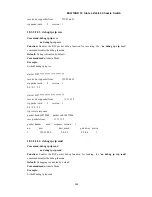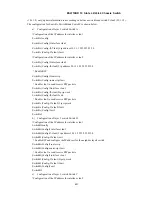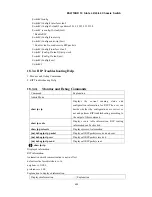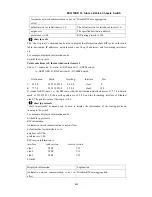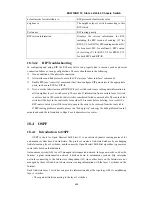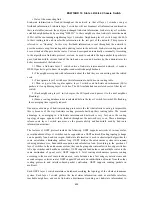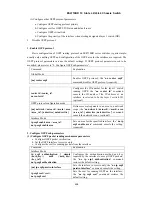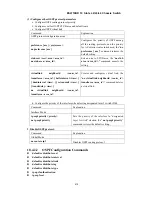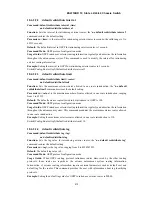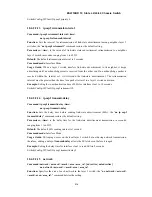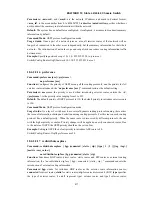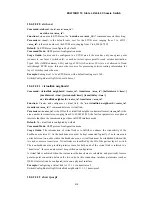
406
E
ES4710BD 10 Slots L2/L3/L4 Chassis Switch
exchange link-state information with the other OSPF layer 3 switches to formal a link-state database
describing the whole autonomous system. Each layer 3 switch builds a shortest path tree rooted in
itself according to the link-state database, this tree provide the route to all nodes in an autonomous
system. If 2 or more layer 3 switches exist (multi-access to the network), "designated layer 3
switch” and “backup designated layer 3 switch” will be selected. Designated layer 3 switch is
responsible for broadcasting link-state of the network. This concept helps the traffic among the
switches.
OSPF protocol requires the autonomous system to be divided into areas. That is to divide the
autonomous system into 0 field (back field) and non-0 filed. Routing information between areas are
further abstracted and summarized to reduce the bandwidth required in the network. OSPF uses four
different kinds of routes; they are the route inside the area, route between areas, first category
exterior route and second category exterior route, in the order of highest priority to lowest. The route
inside an area and between areas describe the internal network structure of an autonomous system,
while external routes describe the routing information to destination outside the autonomous system.
The first type of exterior route corresponds to the information introduced by OSPF from the other
interior routing protocols, the costs of those routes are fair to the costs of OSPF routes; the second
type of exterior route corresponds to the information introduced by OSPF from the other interior
routing protocols, but the costs of those routes are far greater than that of OSPF routes, and OSPF
route cost is ignored when calculating route costs.
OSPF areas are centered with the Backbone area, identified as the 0 area, all the other areas must be
connected to the 0 area logically, and the 0 area must be online. For this reason, the concept of
virtual connection is introduced to the backbone area, so that physically separated areas still have
logical connectivity to this area. The configurations of all the layer 3 switches in the same area must
be the same.
In conclusion, LSA can only be transferred between neighboring layer 3 switches, OSPF protocol
includes 5 types of LSA: router LSA, network LSA, summary LSA to the other areas, general LSA
to AS edge switches and exterior AS LSA. They can also be called type1 LSA, type2 LSA, type3
LSA, type4 LSA, and type5 LSA. Router LSA is generated by each layer 3 switch inside an OSPF
area, and is sent to all the other neighboring layer 3 switches; network LSA is generated by the
specified layer 3 switch in the OSPF area of multi-access network, and is sent to all the other
neighboring layer 3 switches. (In order to reduce traffic on layer 3 switches in the multi-access
network, “designated layer 3 switch” and “backup designated layer 3 switch” should be selected in
the multi-access network, and the network link-state is broadcasted by the designated layer 3 switch);
summary LSA is generated by switches in OSPF area edge, and is transferred among area edge layer
3 switches; AS exterior LSA is generated by layer 3 switches on exterior edge of AS, and is
transferred throughout the AS.
As to autonomous systems mainly advertises exterior link-state, OSPF allow some areas to be
configured as STUB areas to reduce the topology database size. Type4 LSA (ASBR summary LSA)
and type5 LSA (AS exterior LSA) are not allowed to flood into/through STUB areas. STUB areas
must use the default routes, the layer 3 switches on STUB area edge advertise the default routes to
STUB areas by summary LSA, those default routes flood inside STUB only and will not get out of
STUB area. Each STUB area has a corresponding default route, the route from a STUB area to AS
exterior destination must rely on the defaulted route of that area.
The following outlines OSPF priority route calculation process:


